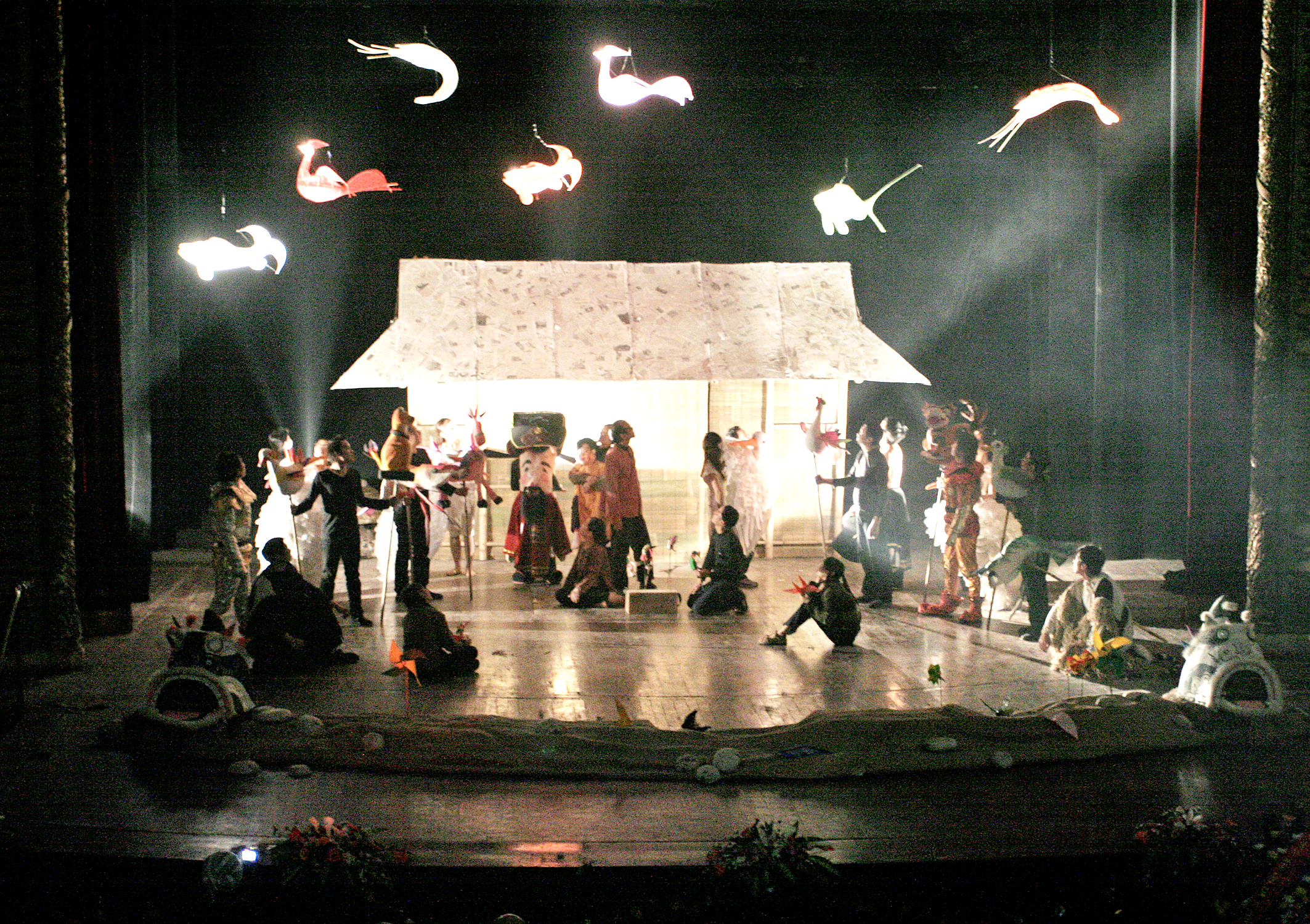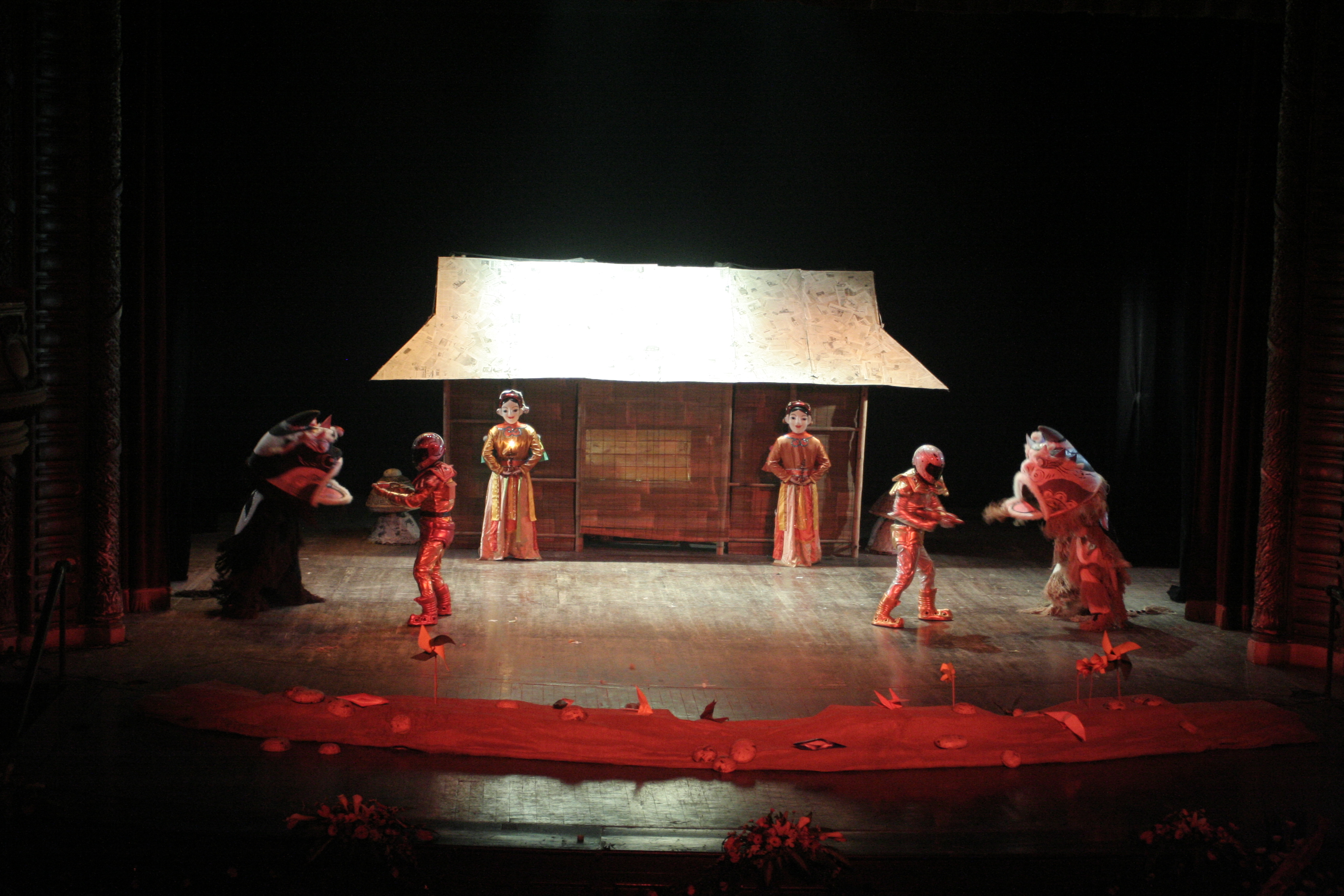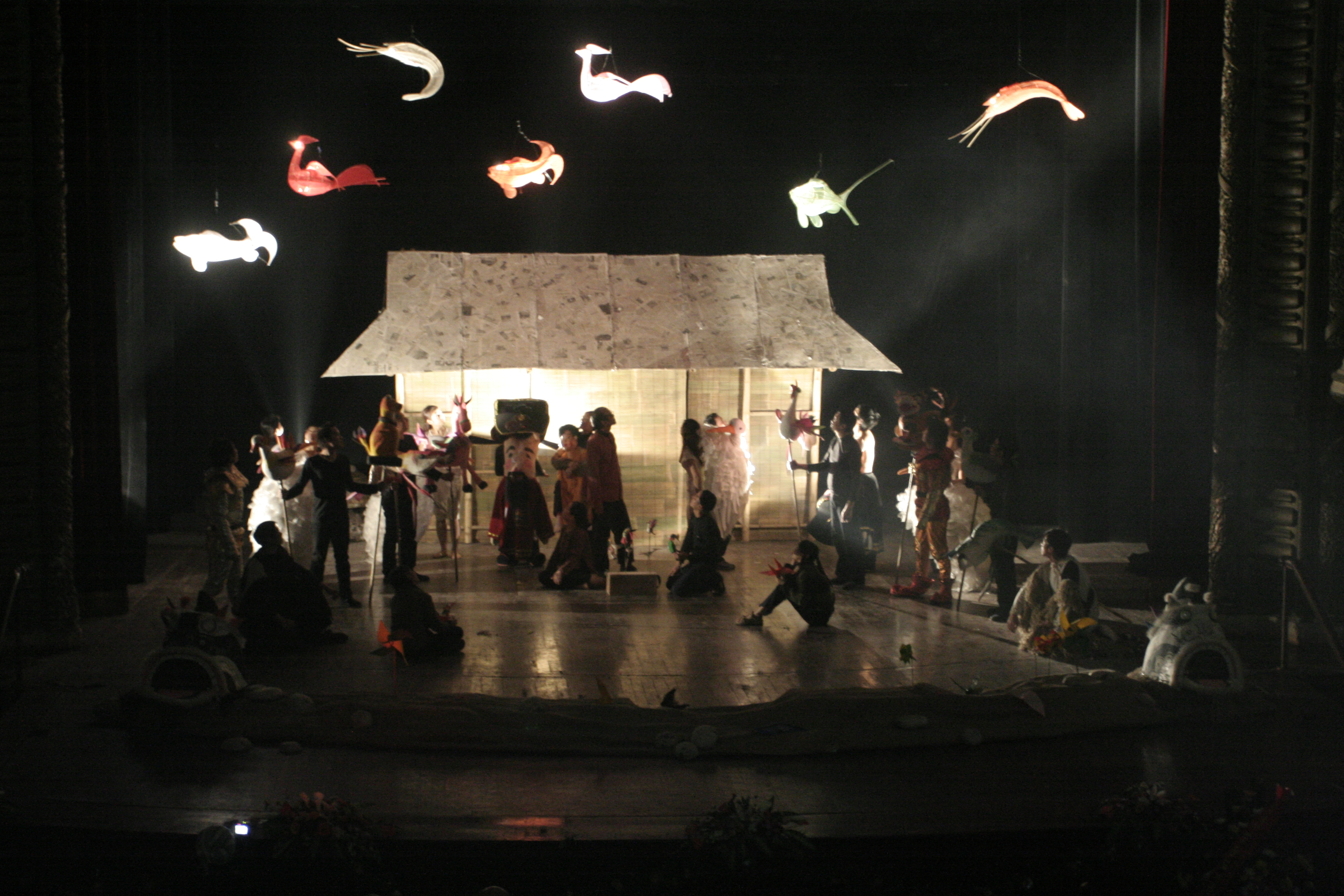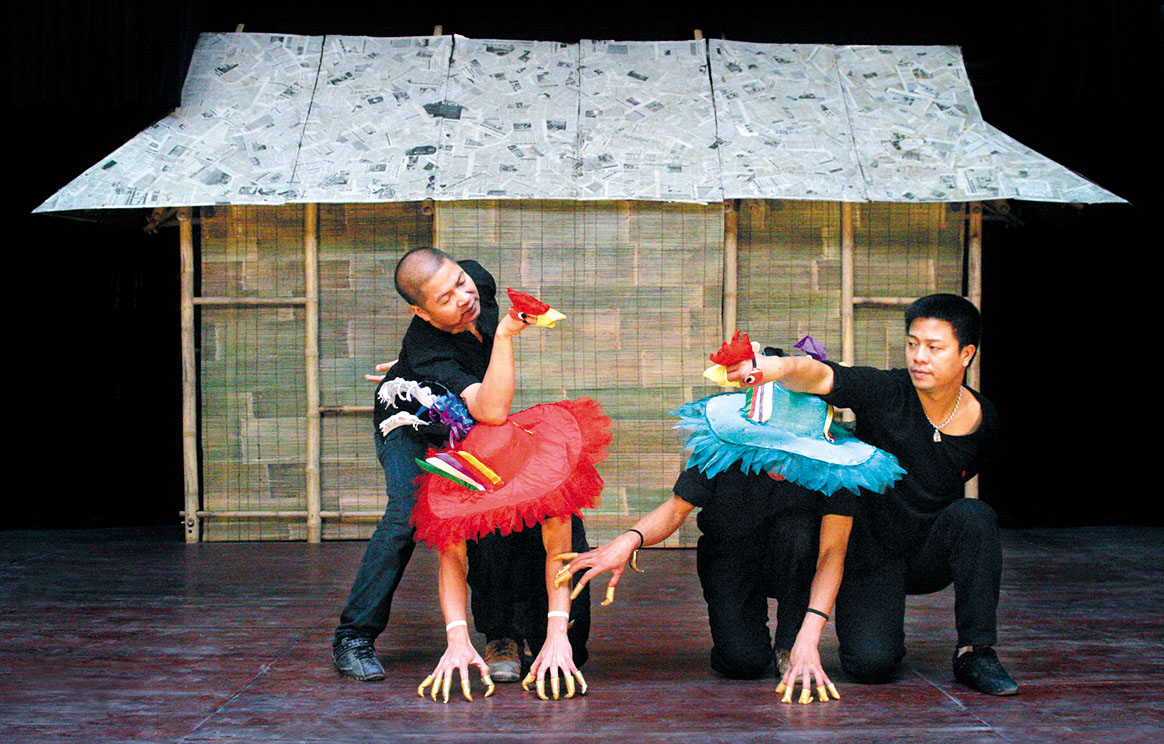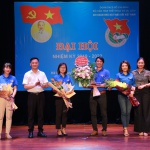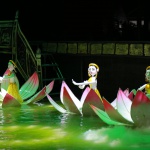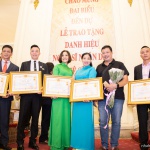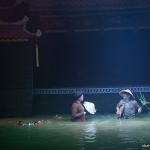“Story of Tò He” is the latest play of the Vietnam National Puppetry Theatre, praising and honouring a traditional craft although it is interested by very few people because of the flooding of industrial toys now.
Artist of Merit Vương Duy Biên, Director of the Theatre, Art Director of this puppet play says: “If ‘Country’s Soul’ is most successful and highly appreciated by the audience in 2007 for its combination of water puppetry and installation art, the “Story of Tò He” is a combination of ground puppets and installation art, shadow, stick, string, dwarf, foot puppets and puppets acted together with humans. Each puppet art form is manipulated in its own way to fit the contents of an item”.
Fifty puppet characters, about more than 20 human-sized tò he toys of different colors such as birds, fish, roosters, phoenix etc. have been completed by the Fine Arts Centre of the Theatre three months ago. After the performance tour of some remote districts of Lao Cai province, artists immediately started the rehearsal of the play “Story of Tò He”.
The stage is simply designed with materials bought from rural villages of Ha Tay, with a bamboo-frame house and newspaper roof. The play begins with a series of motorbike headlight flashing to start a motor race injuring an old man who sells To He toys by the roadside. It is a prelude to the story about the tò he-making craft and dreams of children.
Artist Hồng Phong plays the “artisan” carefully mixing sticky rice powder to make Chú Tễu and 12 designated animals of all colors and place them on a casket. Many children surround the Tò He maker and seller. They passionately look at colourful Tò He toys with excitement. It seems the artist put all “his soul” in his products with skillfulness. Under the deft hands of the artisan, the images engraved in the mind of the children come true in a minute with big Tò He toys which can move, talk, smile and even fly.
In this play, the audience not only witnesses the artisan making Tò He which is a long-standing traditional craft, very unique in Xuân La, Phú Xuyên district, Ha Tay, but also sees Tò He with many new “friends” which are paper birds and paper boats. Then the audience feels the deftness of the artisans in this handicraft art of Vietnam. The “Story of Tò He” suggests imagination and dreams of the audience.
From dậm (a type of bamboo fishing means) full of “rural” simplicity, artists put on them smart white dresses and make them into five storks, four big and one small, with heads and bodies. The stork dance is very interesting and impressive. The actress gets herself into the body of the stork whose “legs” are the legs of the actress. Young actress Trịnh Thùy Trang said: “What is difficult for the actress is how to “manipulate” the stork to be in harmony with other storks in the dance”. This is a new experiment implemented for the first time at the Theatre, thus requiring the harmony and fine feeling of the puppeteers and the puppets.
What is special is that in the past the puppeteers always stay behind the screen or puppets, in the “Story of Tò He” they disguised themselves as puppets and act directly on the stage. The dwarf puppet dance, performed for the first time clearly shows this. The bellies of actors and actresses are decorated as faces and the motion of belly muscles creates an expression of the face. In addition, the scenes of unique cock fighting and maneuvering with reed wood took place in a very seething atmosphere with the participation of 20 children manipulated by 10 actors and actresses. The success of the “Story of Tò He” is also the harmony between music and lighting.
With the participation of 11 puppet troupes from Vietnam and foreign countries in the Festival, the play “Story of Tò He” of the host, the Vietnam National Puppetry Theatre introduces to international friends part of the richness and diversity of Vietnam’s traditional culture.
